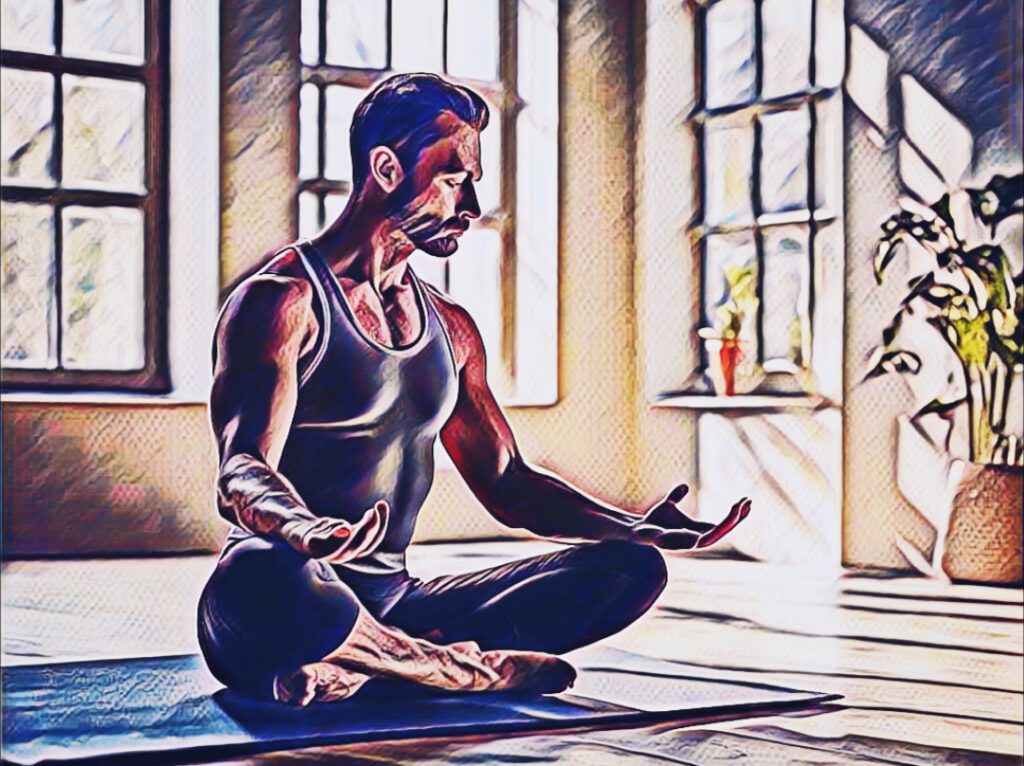How often you should practice yoga depends on your individual needs. Many people can find it beneficial to incorporate yoga into their routine on a regular basis, whether daily or several times a week. Even short sessions of 10 – 20 minutes can have positive effects on flexibility, stress management, and general well-being. If you have specific goals, you might also consider longer sessions of 30 – 60 minutes or more.
Some people find that practicing yoga on different days with different focuses is useful. Ultimately, it is important to listen to your body and find a routine that feels sustainable and comfortable for you specifically, without overexerting yourself. A good starting point might be to start twice to three times a week and then increase as needed.
There are several effective ways to learn yoga, and the best method depends on your personal preferences, learning style, and goals.
Book a class at the gym
Attending a class at a general or specialized yoga studio gives you the opportunity to learn directly from a qualified teacher. You’ll get instant feedback on your technique, which is especially helpful if you’re new. Try different classes and styles to find out what you like best (e.g. Hatha Yoga, Vinyasa Yoga or Yin Yoga).
Private lessons with a yoga teacher
Private lessons allow for personalized training tailored to your specific needs and goals. This can be especially helpful if you have specific physical limitations or goals. It’s best to think in advance about how often you want to take private lessons and whether you have the budget for them. Costs can vary greatly depending on various factors such as location, teacher qualifications, length of session and style of yoga. On average, prices are 66 – 131 dollars per hour.

Recommended resources for self-learning
Down Dog: An easy-to-use app that customizes individual yoga sessions based on your experience level, time, and goal.
Yoga with Adriene: Offers a variety of free yoga videos on YouTube that focus on different needs.
Glo: This app offers a wide selection of yoga classes, meditations, and fitness videos.
“The Big Book of Yoga” by Christa L. Lichtenstern: A comprehensive guide to yoga practice with instruction on asanas, pranayama, and philosophy.
“Light on Yoga” by B.K.S. Iyengar: A classic that offers detailed instructions on postures and their health benefits.
“The Heart of Yoga: Developing a Personal Practice” by T.K.V. Desikachar: Covers the philosophy and practice of yoga and offers practical guidance.
The speed at which success in yoga occurs varies from person to person and depends on factors such as frequency and consistency of practice, individual goals, current fitness level, diet and genetic differences. Typically, positive changes in flexibility, strength and general well-being are noticeable within 4 – 6 weeks.
A helpful addition to back health
Yoga can be both beneficial and challenging for people with back problems. Many styles offer appropriate practices that can help improve flexibility and strength of the back muscles. Hatha, Yin or Restorative Yoga are often good as they focus on gentle movements and stretches. However, it is important to speak to a doctor or physical therapist beforehand if necessary.
Certain yoga poses can also strengthen the core muscles, which helps support the back. During practice, just listen to your body and do not take any risks. If a pose causes pain, it is better to choose a different position or avoid the exercise. It seems advisable to look for classes specifically designed for back problems or to ask for advice.

